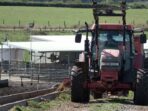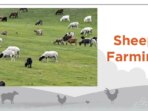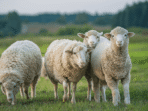Greenhouse Farming Combined with Livestock Systems is the dynamic duo of agriculture that makes even the most stubborn vegetables blush with excitement! Imagine a world where plants and animals work hand in hoof to create a symphony of sustainability and productivity. In this whimsical yet practical realm, green thumbs and furry friends join forces, transforming the farming landscape into a lush paradise where tomatoes thrive under the watchful eye of a curious goat!
This innovative approach melds the efficiency of greenhouse farming with the nurturing aspect of livestock systems, ensuring optimal growth conditions and resource utilization. From boosting soil fertility to cycling nutrients and creating a harmonious ecosystem, the marriage of these two practices not only maximizes yields but also minimizes waste, making it a win-win for farmers and the environment alike!
Ah, socks. Those steadfast companions of our feet, secret keepers of our toes, and occasional victims of the dryer monster. Today, we embark on a whimsical journey, a quest like no other: the search for the world’s most elusive sock! Buckle up, dear reader, and prepare for a tale filled with laughter, mystery, and perhaps an unintentional toe-scented aroma.
The Origin of the Sock
Before we dive into our sock hunt, let’s take a moment to reflect on the heroic history of this unsung hero of fashion. Legend has it that socks were invented around 3,000 B.C. when a very cold-footed caveman named Ug realized that animal skins could only do so much. One fateful day, with nothing but a dream and a little bit of wool, Ug boldly transformed a sheepskin into the first-ever sock.
And thus began the saga of socks – a saga that would lead us to today’s fashion faux pas where socks are paired with sandals (a crime against humanity, truly!).
The Sock Drawer: A Portal to Chaos
Fast forward to modern times, and every household has a sock drawer, a chaotic Pandora’s box that houses mismatched pairs, lonely singles, and the occasional rubber band (which, let’s be honest, probably has its own aspirations as a sock). It’s an existential crisis waiting to happen! You open the drawer, and it’s like stepping into a sock dimension where gravity has no meaning, and colors clash in a flamboyant display of confusion.
So, what drives our desire to find the most elusive sock? Perhaps it’s the thrill of the chase, the sheer joy of discovery, or the overwhelming desire to have matching pairs for that special occasion (you know, like wearing shoes, which is apparently still a thing). But one sock, in particular, has escaped the clutches of humanity for years. Let’s call it “Socky McFluffington.”
The Legend of Socky McFluffington
According to ancient sock lore, Socky McFluffington was no ordinary sock. It was said to be crafted from the rarest material known to footkind: clouds woven with the laughter of children and the joy of puppies. Legend tells us that this sock would grant its wearer unparalleled comfort and the ability to dance like no one’s watching (even when they are, which is mildly embarrassing).
But alas! Socky has been missing for decades and is rumored to be hiding in the sock drawer of destiny.
The Great Sock Expedition
Gathering a team of intrepid sock explorers was no easy task. First, there was Captain Toe, a seasoned sock aficionado with a penchant for mismatched patterns. Next came Dr. Sniffles, the olfactory expert who could identify the scent of a sock from a mile away (and was a little too enthusiastic about it). Finally, we had Sergeant Sole, an undercover sock detective with a flair for the dramatic.
Together, they formed the SOCK (Search for the Outstanding Cloudkeeper of Knowledge) team.
Equipped with flashlights, magnifying glasses, and an extensive collection of scented foot powder, they set off on their expedition. Their first stop? The local laundromat, a place where socks mysteriously vanish into the abyss of lost laundry.
Laundromat Chronicles: The Sock Whisperers
As they entered the laundromat, the team felt an air of mystery. The dryers hummed like a chorus of lost souls, and the scent of fabric softener wafted through the air like a siren’s song. Suddenly, Dr. Sniffles perked up. “Wait! Do you smell that?” he exclaimed, his nose twitching like a detective on the hunt.
The Sock Seers
It wasn’t long before they stumbled upon two elderly ladies, affectionately known as the Sock Seers. These ladies had been knitting since the dawn of time and had a peculiar ability to predict the fate of any sock that passed through their hands. The SOCK team approached them with reverence.
And just like that, the legend of the Sock Monster emerged, a creature so elusive it made Bigfoot look like an overachiever. Determined to find this beast, the SOCK team pressed on.
The Sock Monster’s Cave
Following a series of cryptic clues (which included a map drawn on a napkin and a breadcrumb trail of lint), the SOCK team found themselves at the entrance of the Sock Monster’s lair. “This is it!” Sergeant Sole declared dramatically. “Prepare yourselves for battle!”
With bated breath, they entered the cave, where the darkness was only illuminated by the glow of lost socks hanging from the ceiling. It was like a sock disco, and the team couldn’t help but do a little shimmy. Suddenly, a thunderous noise echoed through the cave, and the Sock Monster emerged, a glorious amalgamation of yarn and mismatched socks.
“What do you want, puny humans?” the Sock Monster boomed, its voice deep and intimidating. “Have you come to reclaim your lost socks?”
Captain Toe stepped forward. “We seek Socky McFluffington! The legendary sock that grants comfort and the dance of joy!”
The Sock Monster paused, considering their request. “Hmm, I do have Socky, but it comes at a price! You must entertain me with your best sock dance!”
The Sock Dance-Off
And so, a high-stakes sock dance-off ensued. The SOCK team showcased their finest moves, from the “Sock Slide” to the “Toe Tap Tango.” The Sock Monster was thoroughly entertained and, after much laughter and a few accidental toe stubs, it relinquished Socky McFluffington with a dramatic flourish.
The Return of Socky: Greenhouse Farming Combined With Livestock Systems
As they emerged from the cave, Socky McFluffington glowing in the sunlight, the team rejoiced. They had not only found the legendary sock but had also created an unforgettable memory filled with laughter and whimsy. Dr. Sniffles declared, “This sock is indeed magical! I can already feel the joy radiating from it!”
The Moral of the Sock Story
And so, dear reader, we learn an important lesson from our sock adventure: sometimes, the search for the things we value the most leads us to unexpected places and delightful experiences. Whether it’s a single sock or a heartfelt connection, the journey is what truly matters. So next time you find yourself with a mysterious lone sock, remember Socky McFluffington and the joys of sock exploration.
Final Thoughts: The Great Sock Conspiracy
As we conclude this epic saga, one cannot help but wonder: is there truly a Sock Monster out there, lurking in the shadows, waiting to munch on our beloved pairs? Or is it simply the universe’s way of reminding us to lighten up and embrace the chaos? Perhaps it’s a little of both, wrapped in a fabric of humor and absurdity.
Now, go forth and check your sock drawers—who knows what adventures await within that realm of cotton and fluff!
Questions Often Asked
What are the main benefits of combining greenhouse farming with livestock systems?
Combining these systems enhances nutrient cycling, improves soil health, and maximizes space and resources, leading to higher overall productivity.
Can livestock help control pests in greenhouse settings?
Absolutely! Certain animals can act as natural pest controllers, reducing the need for chemical interventions and promoting a healthier environment.
Is it cost-effective to implement both systems together?
Yes, while initial investments may be higher, the long-term savings and productivity gains often outweigh the costs, making it financially viable.
What types of livestock are best suited for greenhouse farming?
Small livestock such as chickens, goats, and rabbits are often ideal due to their size and ability to integrate easily into a greenhouse environment.
How does this approach contribute to environmental sustainability?

This method reduces waste, promotes biodiversity, and supports efficient resource use, significantly lowering the carbon footprint of farming operations.




